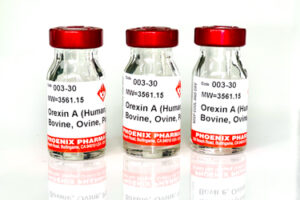
Peptides
Advancing Scientific Discovery With High-Quality Research Peptides
At Phoenix Pharmaceuticals, Inc., we are committed to providing the scientific community with the highest-quality research peptides for cutting-edge biomedical studies. As a leading peptide manufacturing company for over 30 years, we specialize in producing a wide range of synthetic peptides, including biologically active peptides, peptide hormones, and custom peptide synthesis solutions. Our dedication to quality, purity, and innovation has made us the best peptide company for researchers worldwide.
Buy Research Peptides From A Trusted Industry Leader
When you need research peptides for sale, trust Phoenix Pharmaceuticals for unparalleled precision and reliability. Our peptides undergo rigorous quality control and testing to ensure the highest purity standards, making them ideal for academic, pharmaceutical, and biotechnology research. If you need standard catalog peptides or custom peptide synthesis, our expert team is here to support your research needs.

*Catalog peptides below listed below in alphabetical order. If you are looking for something specific, please type it into the search bar at the upper right corner of the website.
